- europages
- >
- COMPANIES - SUPPLIERS - SERVICE PROVIDERS
- >
- organic compounds
Results for
Organic compounds - Import export
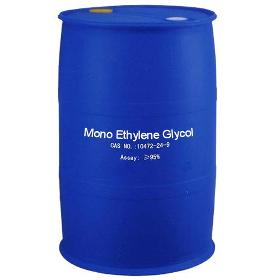
TEMAS GROUP EXPORT PARTNERS
Turkey
MONOETHYLENE GLYCOL (MEG) MEG Purity 99.8 % wt. min Color [Pt-co ] 5 max DEG 0.08 % wt. max Water 0.08 % wt. max Specific gravity (20/20 ◦C) 1.1151-1.1156 Boiling range at 0.1013 MPA 5% Vol. Min 196 ◦C 95% Vol. Max 199 ◦C Pyhsical Spec: Transparent Liquid, colorless Introduction Monoethylene glycol (MEG) is an odorless, colorless, clear and viscose liquid with a sweet taste, which is produced from the reaction between water and ethylene oxide. It is miscible with water, alcohols, and many organic compounds, and has the chemical formula of C2H6O2. General Applications MEG has numerous applications for manufacture of various products including automotive antifreeze and coolants, resins, deicing fluids, heat transfer fluids, leather, paper, textile fibers, water-based adhesives, sturdy polyethylene terephthalate drink and food containers, latex paints and asphalt emulsions and electrolytic capacitors.
Request for a quote
JUST DIFFERENT PEOPLE,S.L.
Spain
TCD-DM alcohol, or trimethylcyclohexyl-3,5-dimethanol, is an organic compound used mainly in the perfumery and cosmetics industry due to its properties as a fragrance fixative. It appears as a colorless liquid with a mild and pleasant aroma. This alcohol is used to improve the durability and stability of perfumes, ensuring that the aromatic notes remain intact for longer. In addition to its use in perfumery, TCD-DM alcohol has applications in personal care products such as lotions and creams, where it acts as an emollient and moisturizer for the skin, providing a soft, silky feel. Its safety profile and ability to improve the sensory experience in cosmetic products make it a valued ingredient in the industry.
Request for a quote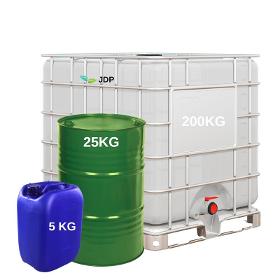
JUST DIFFERENT PEOPLE,S.L.
Spain
Methyl salicylate is an organic compound that is formed by the combination of salicylic acid with methanol alcohol. It appears as a colorless or slightly yellow liquid with a characteristic aroma reminiscent of green winter oil, with sweet and refreshing notes. This compound is widely used in the perfumery and cosmetics industry due to its pleasant and persistent fragrance, which is described as fresh, herbaceous and slightly musky. In perfumery, methyl salicylate is used to add green and balsamic notes to perfumes, improving the complexity and durability of fragrances. In addition, it has mild analgesic and anti-inflammatory properties, which is why it is also used in products for skin care and relief of muscle and joint pain.
Request for a quote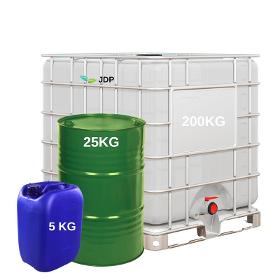
JUST DIFFERENT PEOPLE,S.L.
Spain
Methyl red is an organic compound that belongs to the family of azo dyes. It appears as a deep red powder, soluble in water and slightly soluble in ethanol. It is widely used as a pH indicator in acidic and basic solutions, as it changes from red in acid to yellow in alkaline. In addition to its use as an indicator, methyl red is used in the coloring of textiles, inks, cosmetics and as a dye in the food industry. However, its use in food applications is regulated due to concerns about its safety and potential toxicity in large quantities.
Request for a quote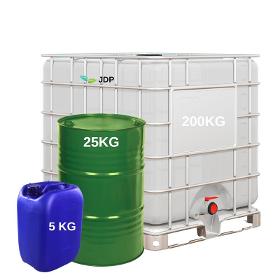
JUST DIFFERENT PEOPLE,S.L.
Spain
Natural gamma terpinene is an organic compound found in several essential oils, especially lemon oil, eucalyptus oil, and thyme oil. It comes as a colorless liquid with a fresh, citrus and herbal aroma. This compound is valued in the perfumery and aromatherapy industry for its refreshing fragrance that provides herbal and citrus notes to aromatic compositions. In addition to its use in perfumery, gamma terpinene has antioxidant and anti-inflammatory properties, which is why it is used in the pharmaceutical industry in skin care and health products. It is also used in the food industry as a natural flavoring additive. Its versatility and health benefits make it a valuable ingredient in a variety of commercial and consumer products.
Request for a quote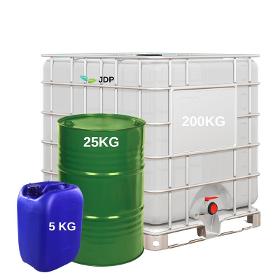
JUST DIFFERENT PEOPLE,S.L.
Spain
Isoeugenol is an organic compound found in several plants, such as nutmeg, bay leaf, and ylang-ylang. It appears as a colorless to pale yellow liquid with a sweet, spicy, clove-like aroma. This compound is valued in the perfumery and cosmetics industry for its warm and spicy fragrance that provides sweet and aromatic notes to the compositions. In addition to its use in perfumery, isoeugenol has applications in the pharmaceutical and personal care products industries due to its antioxidant and antiseptic properties. It is also used in the food industry as a flavoring and in the manufacture of household products, such as fragrances and cleaners. Its versatility and health benefits make it a valuable ingredient in a variety of commercial and consumer products.
Request for a quote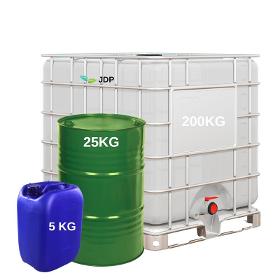
JUST DIFFERENT PEOPLE,S.L.
Spain
Farnesol is an organic compound found naturally in several essential oils, such as rose, neroli, and jasmine. It appears as a colorless liquid with a soft and sweet floral aroma. This compound is valued in the perfumery and cosmetics industry for its pleasant fragrance that provides floral and fresh notes to aromatic compositions. In addition to its use in perfumery, farnesol has antibacterial and anti-inflammatory properties, making it useful in the formulation of skin care products such as creams and lotions. It is also used in the food and beverage industry as a flavoring and in the pharmaceutical industry in the production of medicines. Its versatility and health benefits make it a valuable ingredient in a variety of commercial and consumer products.
Request for a quote
JUST DIFFERENT PEOPLE,S.L.
Spain
Eugenol is an organic compound found naturally in cloves, cinnamon, basil and other aromatic plants. It appears as a colorless to pale yellow liquid with a sweet, spicy and slightly herbal aroma. This compound is widely used in the perfumery and aromatherapy industry for its warm and spicy fragrance, which provides distinctive notes to aromatic compositions. In addition to its use in perfumery, eugenol has antiseptic and analgesic properties, which is why it is used in the pharmaceutical industry in products to relieve dental and throat pain. It is also used in the food industry as a flavoring additive and natural preservative. Its versatility and health benefits make it a valuable ingredient in a variety of commercial and consumer products.
Request for a quote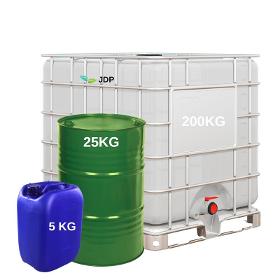
JUST DIFFERENT PEOPLE,S.L.
Spain
Ethyl vanillin is an organic compound derived from vanillin, which is the main aromatic component of vanilla. It occurs as a white crystalline powder or as a light yellow oily liquid with a sweet, intense and characteristic vanilla aroma. This compound is widely used in the food and beverage industry as a flavoring and flavoring due to its aroma similar to that of natural vanilla, but with a higher intensity. Additionally, ethyl vanillin has applications in the perfumery and cosmetics industry, where it is used to provide sweet and soft notes to fragrances and personal care products. Its versatility and distinctive aroma make ethyl vanillin a valuable ingredient in a wide range of commercial and consumer products.
Request for a quote
JUST DIFFERENT PEOPLE,S.L.
Spain
Methyl dihydrojasmonate, also known as hedione, is an organic compound used primarily in the perfumery and fragrance industry. It comes as a colorless liquid with a soft and delicate floral aroma, with notes reminiscent of white flowers such as jasmine and lily of the valley. Hedione is appreciated for its ability to add a fresh and luminous dimension to aromatic compositions, improving the persistence and clean feeling in perfumes. This compound is widely used in the formulation of floral, citrus and fresh fragrances, as well as in personal care products such as lotions and bath gels. Its versatility and refined aromatic profile make it an essential ingredient in the creation of a wide variety of fragrance and personal care products.
Request for a quote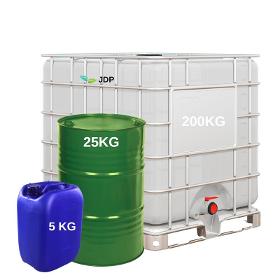
JUST DIFFERENT PEOPLE,S.L.
Spain
Alpha-pinene is an organic compound commonly found in nature, especially in essential oils of various plants such as pine, rosemary, and eucalyptus. It comes as a colorless liquid with a fresh, herbal and slightly earthy aroma. This compound is widely used in the perfumery and fragrance industry due to its refreshing and stimulating fragrance, which is often described as reminiscent of fresh forest air. In addition to its use in perfumery, alpha-pinene has applications in the pharmaceutical and personal care industries, where it acts as a flavoring agent and may also have antimicrobial and anti-inflammatory properties. Its versatility and characteristic aroma make it a valuable ingredient in the formulation of a variety of commercial and consumer products.
Request for a quote
JUST DIFFERENT PEOPLE,S.L.
Spain
Cinnamic alcohol is an organic compound that occurs as a colorless liquid with a sweet and characteristic cinnamon aroma. It is mainly derived from the bark of the cinnamon tree or chemically synthesized. This alcohol is widely used in the perfume and fragrance industry due to its warm and spicy aroma, which adds distinctive notes to olfactory compositions. In addition to its use in fragrances, cinnamic alcohol has applications in the food industry as a flavoring additive, providing a sweet and spicy flavor to certain products. In the pharmaceutical and cosmetic industries, it is used as a flavoring and fixing agent in personal care products. Its versatility and pleasant aroma make it a valuable component in the creation of a variety of commercial products.
Request for a quote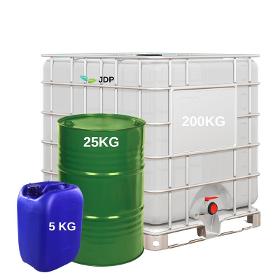
JUST DIFFERENT PEOPLE,S.L.
Spain
Camphor is a solid, crystalline organic compound, known for its distinctive strong and pungent aroma. Derived from the camphor tree (Cinnamomum camphora) or chemically synthesized, it is widely used in traditional and modern medicine. In medicinal products, camphor is appreciated for its analgesic, anti-inflammatory and antiseptic properties, being commonly used in ointments and liniments to relieve muscle and joint pain, as well as in topical treatments for insect bites and skin irritations. Additionally, camphor is used in the perfumery and cosmetics industry for its distinctive fragrance, and in household products as an insect repellent. Its versatility and effectiveness in multiple applications make camphor a valuable component in both health and personal care.
Request for a quote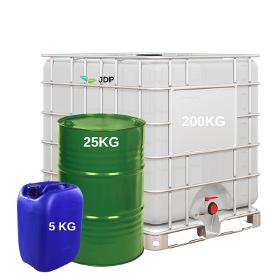
JUST DIFFERENT PEOPLE,S.L.
Spain
D-limonene is an organic compound found naturally in the peel of citrus fruits such as oranges, lemons and limes. It appears as a colorless liquid with an intense and fresh citrus aroma. D-limonene is widely used in the perfumery and cosmetics industry for its refreshing and revitalizing fragrance, which provides citrus and luminous notes to aromatic compositions. In addition to its use in perfumery, D-limonene has applications in the food industry as a flavoring and in domestic and industrial cleaning due to its properties as a natural solvent and degreaser. It is also used in the pharmaceutical and personal care products industries due to its antioxidant and anti-inflammatory properties. Its versatility and health benefits make it an essential ingredient in a variety of commercial and consumer products.
Request for a quote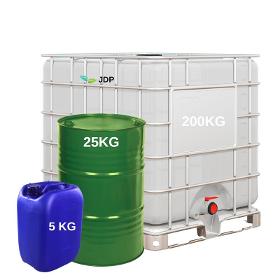
JUST DIFFERENT PEOPLE,S.L.
Spain
Methyl eugenol is a natural organic compound found in various essential oils, such as clove, bay leaf, and basil. It appears as a colorless to pale yellow liquid with a sweet, spicy and slightly floral aroma, similar to that of eugenol. This compound is used in the perfumery and cosmetics industry to provide warm and spicy notes to fragrances, enriching the aromatic complexity of the products. Additionally, methyl eugenol has applications in the food industry as a flavoring agent in a variety of foods and beverages. However, due to concerns about its safety in large quantities, its use is regulated in many regions. In scientific research, its bioactive properties are studied, including antimicrobial and antioxidant effects, which expands its relevance in the field of chemistry and biology.
Request for a quote
JUST DIFFERENT PEOPLE,S.L.
Spain
Cinnamic aldehyde is an organic compound that occurs as a colorless liquid with an intense and sweet aroma, reminiscent of the smell of cinnamon. It is widely used in the perfumery and fragrance industry due to its warm and spicy fragrance, which provides distinctive and exotic notes to aromatic compositions. This aldehyde is valued for its ability to improve the depth and character of perfumes, also acting as a fixative that helps prolong the duration of the aroma on the skin. In addition to its use in perfumery, cinnamic aldehyde has applications in the food and pharmaceutical industries, where it is used as a flavoring additive and as a component in the synthesis of certain medications. Its distinctive aromatic profile and multiple uses make it an essential ingredient in the formulation of a wide range of commercial and consumer products.
Request for a quote
JUST DIFFERENT PEOPLE,S.L.
Spain
PTBCH alcohol, also known as patchoulol or patchone, is an organic compound that occurs as a colorless liquid with an earthy, sweet, and musky aroma. It is mainly obtained from the essential oil of the patchouli plant (Pogostemon cablin), and is widely used in the perfumery and cosmetics industry due to its distinctive and long-lasting fragrance. Patchoulol acts as a fixative in perfumes, improving the longevity and stability of aromatic mixtures. In addition to its use in perfumery, PTBCH alcohol has antioxidant and anti-inflammatory properties, making it useful in skin and hair care products to promote health and cellular regeneration. Its warm, exotic aroma, along with its functional benefits, make it a valuable component in the formulation of a variety of high-quality cosmetic products.
Request for a quoteDo you sell or make similar products?
Sign up to europages and have your products listed
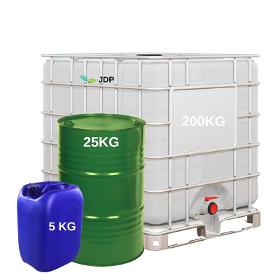
JUST DIFFERENT PEOPLE,S.L.
Spain
Citral is an organic compound that consists of a mixture of two isomeric aldehydes: neral and geranial. It appears as a colorless to pale yellow liquid with an intense, citrus aroma, similar to that of lemons and limes. It is a key component in the essential oil of several citrus fruits, such as lemon, orange and lime, and is also found in aromatic plants such as lemongrass and verbena. Citral is widely used in the perfumery and fragrance industry due to its freshness and liveliness, providing citrus and refreshing notes to aromatic compositions. In addition to its use in perfumery, citral has applications in the food industry as a flavoring and in the pharmaceutical and cosmetics industries for its antimicrobial and anti-inflammatory properties. Its versatility and pleasant aroma make it an essential ingredient in a variety of commercial and consumer products.
Request for a quote
FKL FERTILIZERS
Belgium
This is a series of organic compound fertilizers used as base fertilizer for a range of different crops. In addition to providing primary nutrients such as nitrogen, phosphorus and potassium, they contain a high percentage of organic material and some very important trace elements such as Fe, Mn, B, Mo, Zn and Cu.
Request for a quote
FKL FERTILIZERS
Belgium
This is a series of organic compound fertilizers used as base fertilizer for a range of different crops. In addition to providing primary nutrients such as nitrogen, phosphorus and potassium, they contain a high percentage of organic material and some very important trace elements such as Fe, Mn, B, Mo, Zn and Cu.
Request for a quote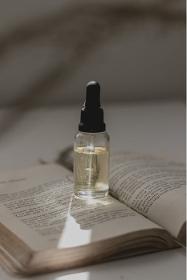
SMW
France
The fruit of our work and our collaboration with our Master Perfumers has led us to develop 4 universes to create various environments, which will correspond to your stories, your identity or your desires. SMW has designed a wide range of fragrance diffusers suitable for all types of environment, whatever the volume to be treated. All diffusers feature the most effective dry vapor diffusion technique to date: micro-nebulization. Dry" effect: no oil or liquid deposits around the diffuser Cold process: the chemical properties of the fragrance are not altered. Environmentally-friendly: safe and effective (no added Volatile Organic Compounds or solvents) Can be diffused via centralized ventilation and air-conditioning systems Let yourself be seduced by our fragrance collections
Request for a quote
STOOPEN & MEEÛS
Belgium
candy, spices, herbs, ... FOODCOLOURS A dye is a substance that needs a certain affinity with the carrier on which it is being applied. Hence a bond is created and the colouring capacity emerges. Contrary to a pigment, a dye is a dissolvable colorant and the colouring capacity will only show when dissolved. Dyes always have an organic compound. For more than 5000 years, natural resources have been the base for dyes. Leafs, roots and berries are just some of the components. Nowadays, most of these components have been replaced by synthetic variants. Of course, special dyes are applied when considering nutrition. (E100-199) Some dyes can be transformed in pigments by applying iron salt in a solution. This will cause the formation of the pigment. However, pigments won in this way are often little UV-resistant. What are dyes? There exists a great number of dyes for a great number of applications. Dyes are usually categorised based on their properties. (e.g.
Request for a quote
STOOPEN & MEEÛS
Belgium
detergents, ... WATER-SOLUBLE DYES A dye is a substance that needs a certain affinity with the carrier on which it is being applied. Hence a bond is created and the colouring capacity emerges. Contrary to a pigment, a dye is a dissolvable colorant and the colouring capacity will only show when dissolved. Dyes always have an organic compound. For more than 5000 years, natural resources have been the base for dyes. Leafs, roots and berries are just some of the components. Nowadays, most of these components have been replaced by synthetic variants. Of course, special dyes are applied when considering nutrition. (E100-199) Some dyes can be transformed in pigments by applying iron salt in a solution. This will cause the formation of the pigment. However, pigments won in this way are often little UV-resistant. What are dyes? There exists a great number of dyes for a great number of applications. Dyes are usually categorised based on their properties. (e.g.
Request for a quote
STOOPEN & MEEÛS
Belgium
petroleumbased products, candles, ... SOLVENT DYES A dye is a substance that needs a certain affinity with the carrier on which it is being applied. Hence a bond is created and the colouring capacity emerges. Contrary to a pigment, a dye is a dissolvable colorant and the colouring capacity will only show when dissolved. Dyes always have an organic compound. For more than 5000 years, natural resources have been the base for dyes. Leafs, roots and berries are just some of the components. Nowadays, most of these components have been replaced by synthetic variants. Of course, special dyes are applied when considering nutrition. (E100-199) Some dyes can be transformed in pigments by applying iron salt in a solution. This will cause the formation of the pigment. However, pigments won in this way are often little UV-resistant. What are dyes? There exists a great number of dyes for a great number of applications. Dyes are usually categorised based on their properties. (e.g.
Request for a quote
STOOPEN & MEEÛS
Belgium
staining, polishing, varnishing,... NATURAL OXIDES: yellow, red, brown, black STAIN, COLOURED STAIN SYNTHETIC IRON OXIDES: yellow, red, brown, black CHROME OXIDE GREEN COBALT OXIDE: green, blue ULTRAMARINE: blue, violet CARBON- or PITCH-BLACK TITANIUMDIOXIDE WHITE LEAD CHROMATE : yellow, orange WATER-SOLUBLE DYES: acid and basic A dye is a substance that needs a certain affinity with the carrier on which it is being applied. Hence a bond is created and the colouring capacity emerges. Contrary to a pigment, a dye is a dissolvable colorant and the colouring capacity will only show when dissolved. Dyes always have an organic compound. For more than 5000 years, natural resources have been the base for dyes. Leafs, roots and berries are just some of the components. Nowadays, most of these components have been replaced by synthetic variants. Of course, special dyes are applied when considering nutrition.
Request for a quote
STOOPEN & MEEÛS
Belgium
wool, coton, leather, raffia, nylon, ... DIVERS DYES A dye is a substance that needs a certain affinity with the carrier on which it is being applied. Hence a bond is created and the colouring capacity emerges. Contrary to a pigment, a dye is a dissolvable colorant and the colouring capacity will only show when dissolved. Dyes always have an organic compound. For more than 5000 years, natural resources have been the base for dyes. Leafs, roots and berries are just some of the components. Nowadays, most of these components have been replaced by synthetic variants. Of course, special dyes are applied when considering nutrition. (E100-199) Some dyes can be transformed in pigments by applying iron salt in a solution. This will cause the formation of the pigment. However, pigments won in this way are often little UV-resistant. What are dyes? There exists a great number of dyes for a great number of applications. Dyes are usually categorised based on their properties. (e.g.
Request for a quote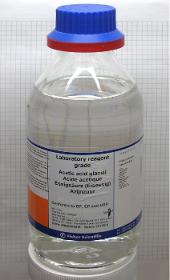
J.D.F. IMPORT-EXPORT GMBH
Germany
Acetic Acid is a colourless liquid organic compound with the chemical formula CH3COOH. It is also called glacial acetic acid when undiluted. Acetic acid is the main component of vinegar, and has a distinctive sour taste and pungent smell. In food preparation, Acetic Acid can be used as a flavouring and as a food preservative. The acid inhibits bacterial growth, keeping food safe from contamination. Industrially, acetic acid is used in a wide range of processes, including as a weak acid, a solvent, a reagent, a catalyst, and a pesticide, and can be used in the preparation of paints, varnishes and glazes.
Request for a quote
SCHÖNWOLF HAMBURG BY 7 SOLUTIONS GMBH
Germany
With the robust and reliable gas detector GasAlertMicro5 of BW-Technologies, it is possible to measure and to control up to five dangerous gases at the same time. Thanks to intelligent, integrated pump technology (optional) long distance samples in containers or enclosed rooms are possible, and is suitable for a broaden range of industrial applications. GasAlertMicro5 is available as standard version for toxic and flammable gases, as well as PID version for detection of volatile organic compound or as IR-version for detection of carbon monoxide. Features of GasAlertMicro5 Permanent display up to 5 gases concentrates in real-time at once Impact- and water-resistant Self-test of all functions for sensors, battery, electronic and acoustic / visual alarm Bright, wide-angle flashing alarm display With integrated vibration alarm, ideal for noisy environment Free adjustable alarm points Integrated gas sampling pump with reliable membrane technology Setting of various languages...
Request for a quoteResults for
Organic compounds - Import exportNumber of results
29 ProductsCountries
Company type